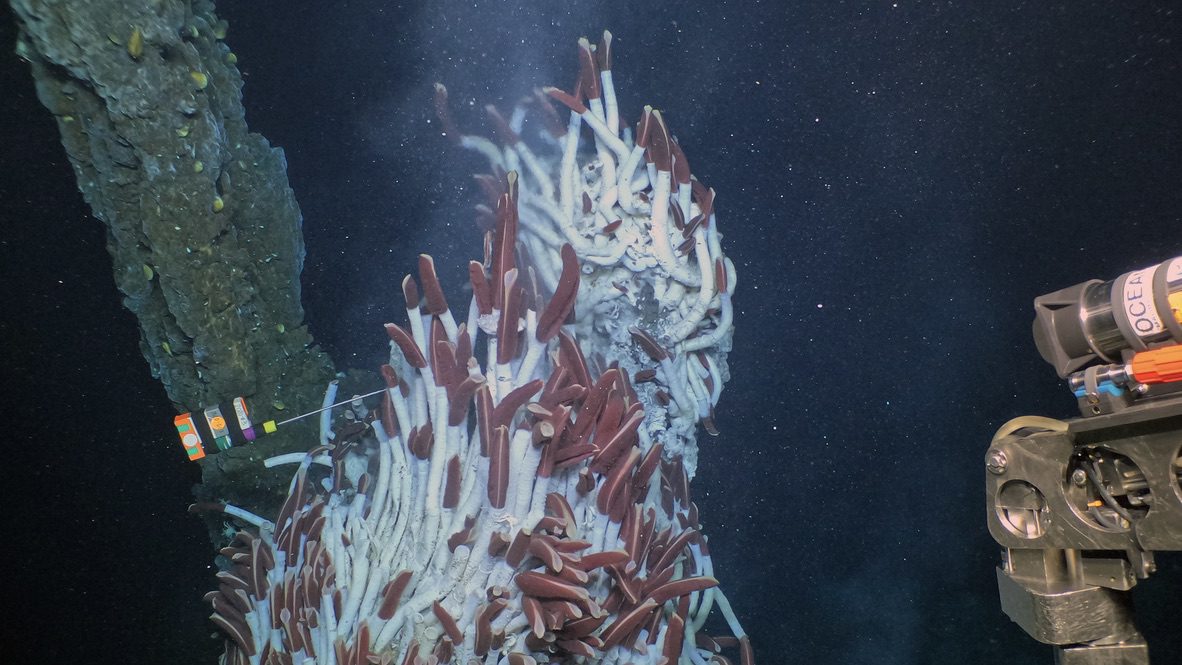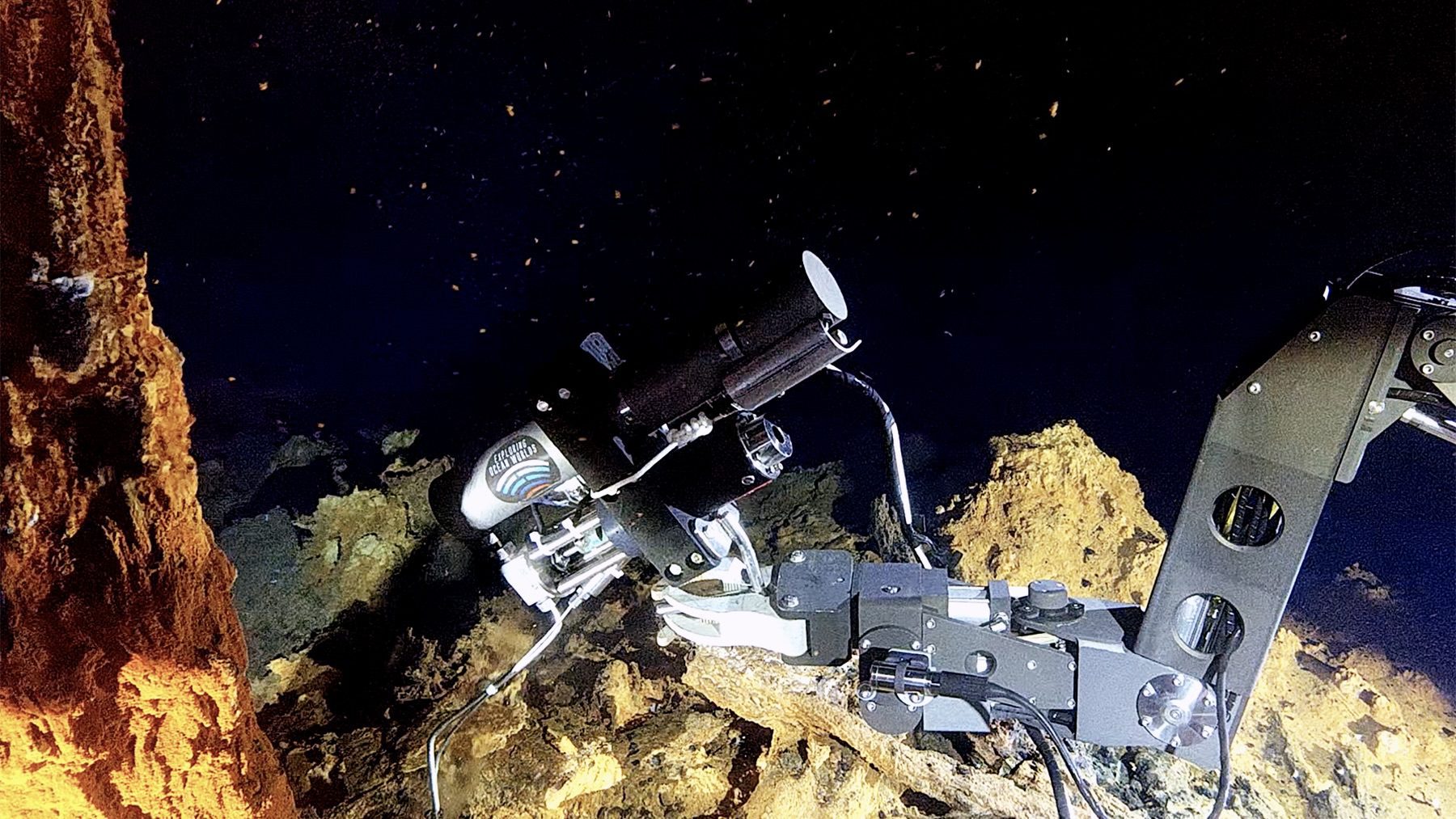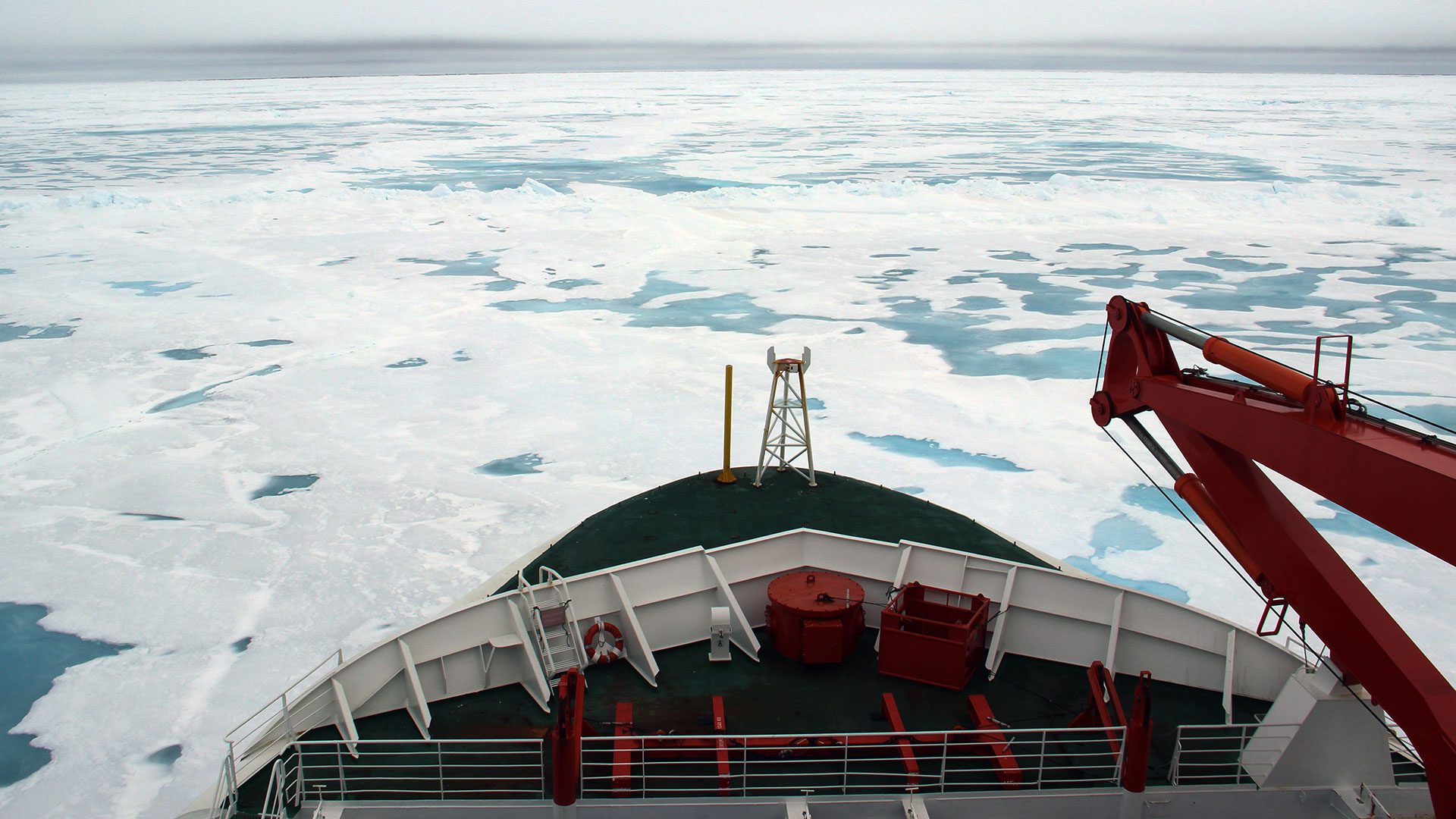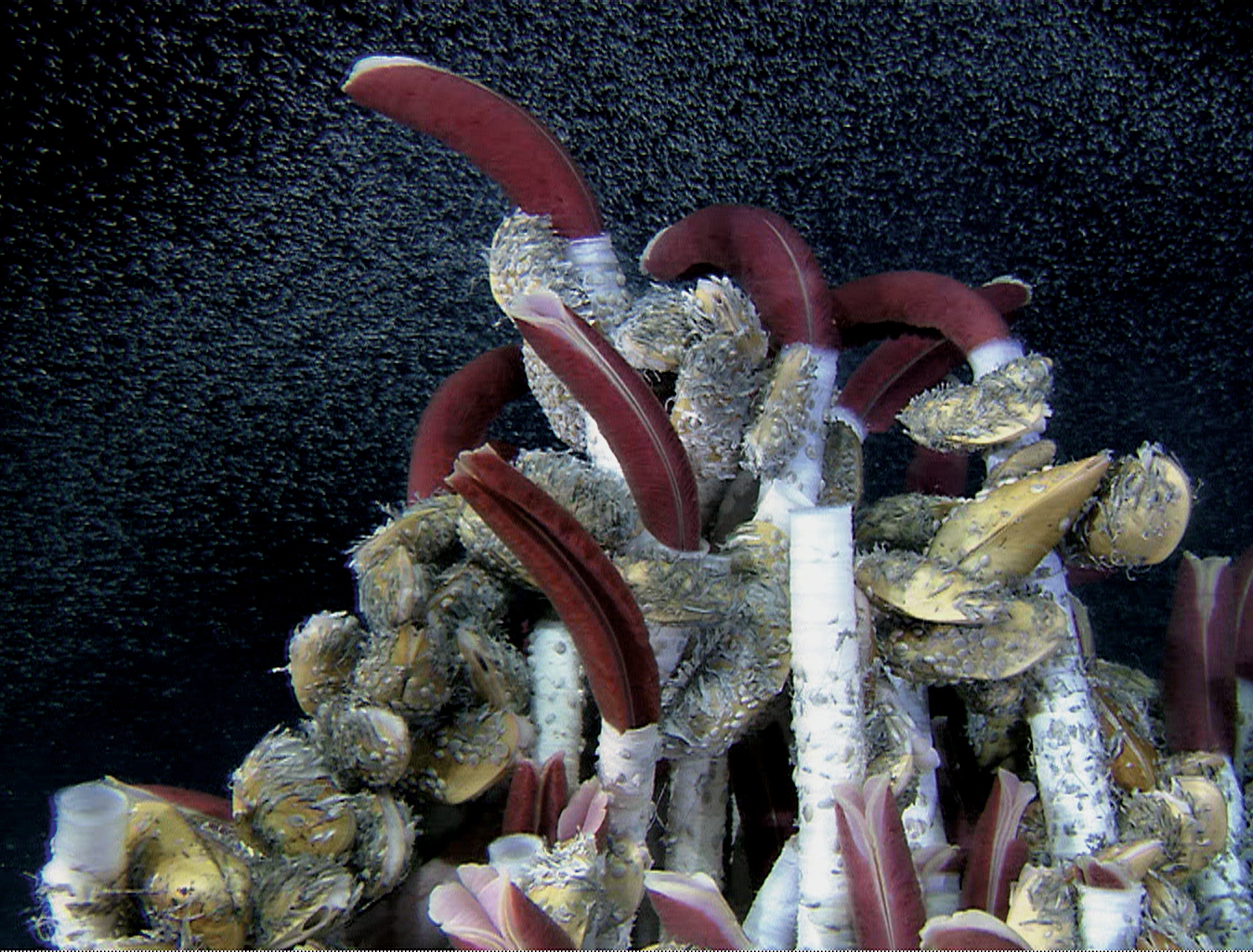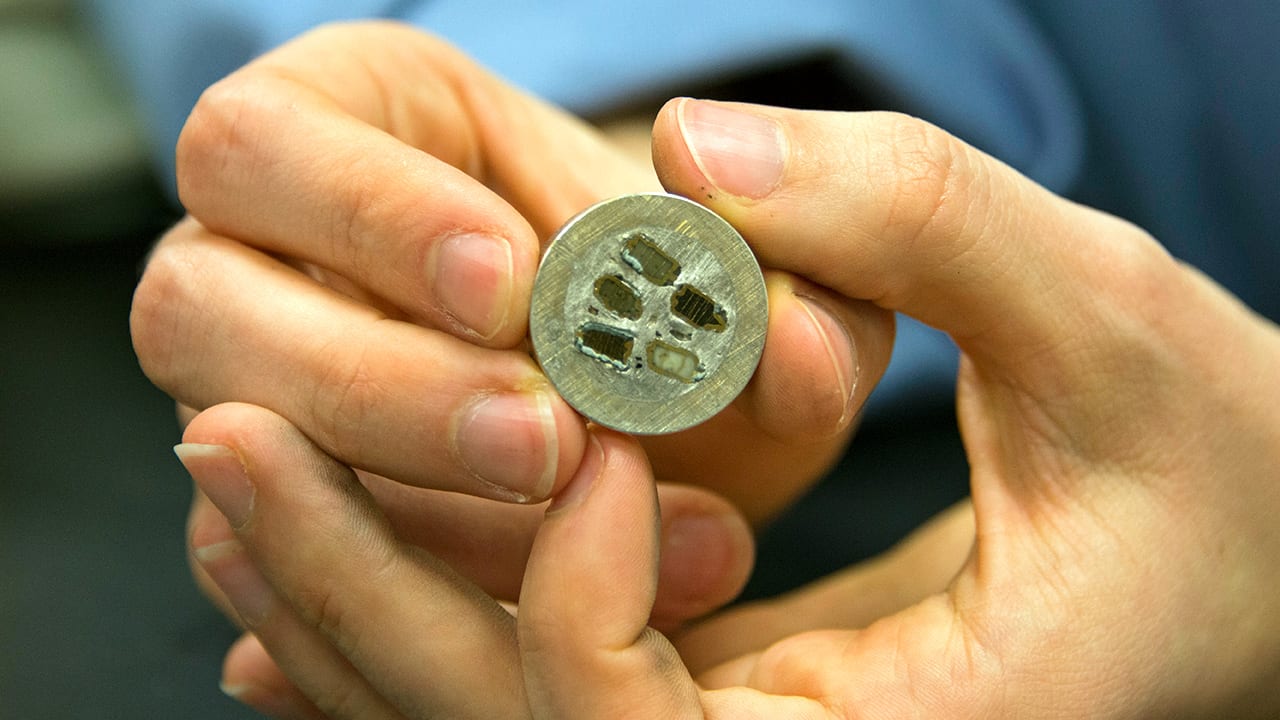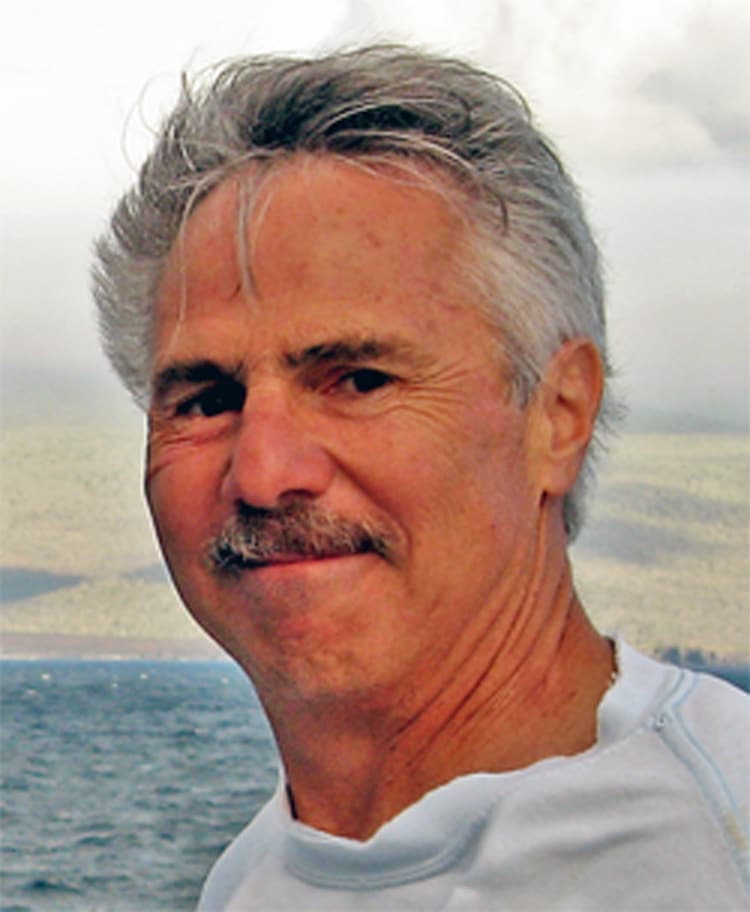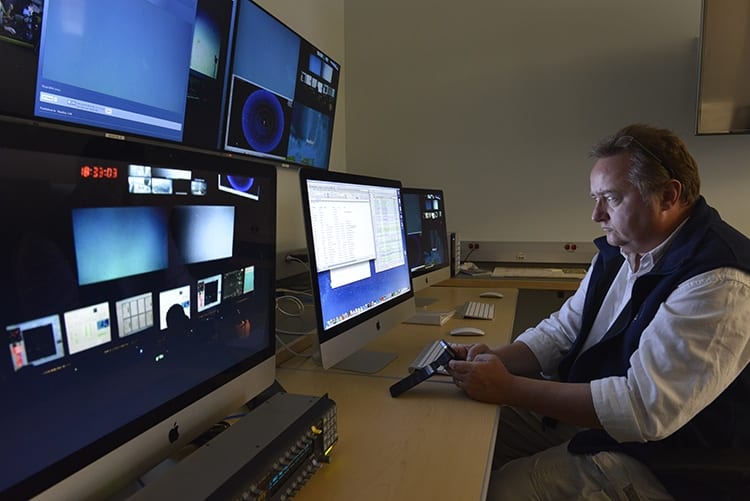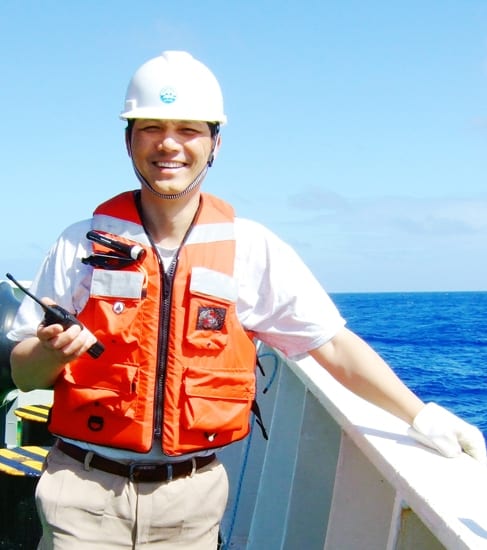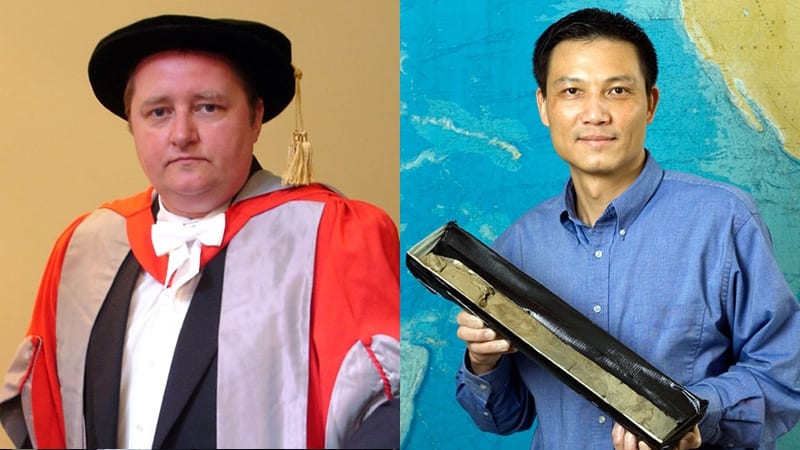News Releases
Scientists uncover a new way to forecast eruptions at mid-ocean ridges through hydrothermal vent temperatures
A new study reveals fluctuations in temperature of fluids from hydrothermal vents indicate the effects of magmatic and tectonic processes that occur miles beneath the seafloor.
Read MoreScientists Report New Type of Mid-Ocean Ridge in Remote Parts of the Earth
Scientists from the Woods Hole Oceanographic Institution (WHOI) have identified a new type of ocean ridge that is spreading so slowly that Earth’s mantle is exposed over large regions of the sea floor. Their findings of a new ultraslow class of ridge, reported in the November 27 issue of the journal Nature, offer a major change in thinking about the formation of the great crustal plates that make up the surface of the earth.
Read MoreEddies Found to be Deep, Powerful Modes of Ocean Transport
Researchers from Woods Hole Oceanographic Institution (WHOI) and their colleagues have discovered that massive, swirling ocean eddiesÂknown to be up to 500 kilometers across at the surfaceÂcan reach all the way to the ocean bottom at mid-ocean ridges, some 2,500 meters deep, transporting tiny sea creatures, chemicals, and heat from hydrothermal vents over large distances.
Read MoreNewly published study reveals diversity of novel hydrothermal vent styles on the Arctic Ocean floor
Research offers potential understanding of habitability on ocean worlds in the outer solar system
Read MoreResearchers Studying Ocean Transform Faults, Describe a Previously Unknown Part of the Geological Carbon Cycle
Woods Hole, Mass. – Studying a rock is like reading a book. The rock has a story to tell, says Frieder Klein, an associate scientist in the Marine Chemistry &…
Read MoreArctic Hydrothermal Vent Site Could Help in Search for Extraterrestrial Life
When scientists discovered a hydrothermal vent site in the Arctic Ocean’s Aurora hydrothermal system in 2014, they did not immediately realize just how exciting their discovery was.
Read MoreWHOI Hosts Public Event Celebrating the 40th Anniversary of the Discovery of Deep-Sea Hot Springs
The discovery of lush communities of deep-sea life at thermal springs on the seafloor in 1977 forever changed our perception of where and how life could exist on Earth. Diving…
Read MoreTaking Earth’s Inner Temperature
A new WHOI study led by WHOI suggests the mantleâÃÂÃÂthe mostly solid, rocky part of Earth’s interior that lies between its super-heated core and its outer crustal layerâÃÂÃÂmay be hotter than previously believed. The surprising finding could change how scientists think about many issues in Earth science including how ocean basins form.
Read MoreWhere Iron and Water Mix
A new study by researchers from University of Washington (UW), Woods Hole Oceanographic Institution (WHOI), and the University of Southern California, demonstrates that chemical-laden plumes erupted from vents at one section of Mid Ocean Ridge in the SE Pacific can be traced all the way across the Pacific for more than 4000 kilometers. Further, the study shows how the iron transported by this process is ultimately brought to the surface oceans of Antarctica where it is serves as a key life-sustaining micro-nutrient supporting up to 30 percent of all the organic carbon uptake in that ocean.
Read MoreDeep Sea Explorations Come to Life in Extraordinary New Book
WHOI scientists Daniel Fornari and Timothy Shank and their colleagues Jeff Karson (Syracuse Univ.), Deborah Kelley (U. Washington) and Michael Perfit (U. Florida) bring their deep-sea explorations to the public…
Read MoreDan Fornari to Receive American Geophysical Union’s Flinn Award
Woods Hole Oceanographic Institution Senior Scientist Daniel Fornari has been selected to receive the 2014 Edward A Flinn III Award from the America Geophysical Union (AGU).
Read MoreAlexander von Humboldt Foundation Honors Two WHOI Scientists
The Alexander von Humboldt Foundation in Bonn, Germany, has recognized two Woods Hole Oceanographic Institution (WHOI) scientists with honors: Chris German received a Humboldt Research Award and Caroline Ummenhofer was chosen for a Humboldt Research Fellowship.
Read MoreAlvin Upgrade Project Featured at American Geophysical Union Meeting
The multi-million dollar upgrades to the storied deep-diving research submersible Alvin will be the focus of a press conference on December 15 at the 2010 American Geophysical Union meeting in San Francisco, CA. Upgrade Project Principal Investigator Susan Humphris, a WHOI geologist, will provide details of the improvements to the sub’s capabilities and its value to the U.S. scientific community.
Read MoreNovel Ocean-Crust Mechanism Could Affect World’s Carbon Budget
The Earth is constantly manufacturing new crust, spewing molten magma up along undersea ridges at the boundaries of tectonic plates. The process is critical to the planet?s metabolism, including the cycle of underwater life and the delicate balance of carbon in the ocean and atmosphere. Now, scientists at the Woods Hole Oceanographic Institution (WHOI) have observed ocean crust forming in an entirely unexpected way?one that may influence those cycles of life and carbon and, in turn, affect the much-discussed future of the world?s climate.
Read MoreExpedition to Mid-Cayman Rise Identifies Unusual Variety of Deep Sea Vents
deep-sea hydrothermal vents Mid-Cayman Rise Woods Hole Oceanographic Institution (WHOI) Proceedings of the National Academy of Sciences NASA-funded search extreme environments origins and evolution life
Read MorePioneering Deep-Sea Robot Lost at Sea
A pioneering deep-sea exploration robot—one of the first successful submersible vehicles that was both unmanned and untethered to surface ships—was lost at sea Friday, March 5, on a research expedition…
Read MoreDeep Sea Floor Mining Is Subject of International Colloquium at WHOI
Scientists, policymakers, environmentalists, and industry representatives will gather next week at Woods Hole Oceanographic Institution (WHOI) to discuss the issue of mining precious metals from the seafloor. A public colloquium,…
Read MoreCarbon Acts Like Rustoleum Around Hydrothermal Vents
The cycling of iron throughout the oceans has been an area of intense research for the last two decades. Oceanographers have spent a lot of time studying what has been…
Read MoreJian Lin Named a Fellow of the American Association for the Advancement of Science
Jian Lin of the Woods Hole Oceanographic Institution (WHOI) has been named a fellow of the American Association for the Advancement of Science (AAAS). Election as a fellow is an…
Read MoreGeologists Discover Signs of Volcanoes Blowing their Tops in the Deep Ocean
A WHOI research team has uncovered evidence of explosive volcanic eruptions deep beneath the ice-covered surface of the Arctic Ocean. Such violent eruptions of splintered, fragmented rock?known as pyroclastic deposits?were not thought possible at great ocean depths because of the intense weight and pressure of water and because of the composition of seafloor magma and rock.
Read MoreLost City pumps life-essential chemicals at rates unseen at typical black smokers
Hydrocarbons?molecules critical to life?are routinely generated by the simple interaction of seawater with the rocks under the Lost City hydrothermal vent field in the Atlantic Ocean. The production of such building blocks of life makes Lost City-like vents strong contenders as places where life might have originated on Earth, according to research led by the University of Washington and the Woods Hole Oceanographic Institution.
Read MoreFragmented Structure of Seafloor Faults May Dampen Effects of Earthquakes
Many earthquakes in the deep ocean are much lower in magnitude than expected. Geophysicists from the Woods Hole Oceanographic Institution (WHOI) have found new evidence that the fragmented structure of seafloor faults and previously unrecognized volcanism may be dampening the effects of these quakes.
Read MoreExplorers to Use New Robotic Vehicles to Hunt for Life and Hydrothermal Vents on Arctic Seafloor
Researchers will probe the Gakkel Ridge during expedition that begins on July 1.
Read MoreWHOI Geologists Recognized for Achievements
Two senior scientists in the Department of Geology and Geophysics at the Woods Hole Oceanographic Institution (WHOI) have been honored for their outstanding contributions to understanding the makeup and dynamics…
Read More
